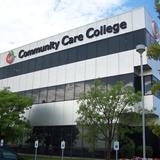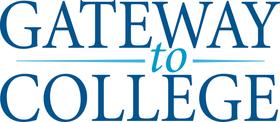- Clary Sage College is a non-profit, private institution located in Tulsa, OK offering the best in beauty and design education.
School Highlights
Clary Sage College serves 712 students (100% of students are full-time).
The college's student-teacher ratio of 20:1 is higher than the state community college average of 18:1.
Minority enrollment is 54% of the student body (majority Black and American), which is less than the state average of 56%.
Quick Facts (2025-26)
- Enrollment: 712 students
- Acceptance Rate: 11%
- Student-teacher ratio: 20:1
- Minority enrollment: 54%
- Source: Integrated Postsecondary Education Data System (IPEDS)
Top Rankings
Clary Sage College ranks among the top 20% of public schools in Oklahoma for:
Category
Attribute
Completion Rates
Debt For Students
School Overview
The teacher population of 36 teachers has stayed relatively flat over five years.
Clary Sage College
(OK) Community College Avg.
Carnegie Classification
Not applicable, not in Carnegie universe (not accredited or nondegree-granting)
Baccalaureate/Associate's Colleges: Mixed Baccalaureate/Associate's
Institution Level
At least 2 but less than 4 years
At least 2 but less than 4 years
Institution Control
Private not-for-profit
Public
Total Faculty
36 staff
184 staff
Number of Programs Offered
9
14
School Calendar
Student Body
The student population of Clary Sage College has grown by 116% over five years.
The student-teacher ratio of 20:1 has increased from 10:1 over five years.
The Clary Sage College diversity score of 0.71 is less than the state average of 0.76. The school's diversity has grown by 8% over five years.
Total Enrollment
712 students
1,856 students
Student-Teacher Ratio
20:1
18:1
# Full-Time Students
712 students
712 students
# Part-Time Students
n/a
1,144 students
# Enrollment Undergraduate
712 students
248 students
# Full-Time Undergraduate Students
712 students
663 students
# Full-Time Graduate Students
n/a
5 students
# Part-Time Undergraduate Students
n/a
1,058 students
# Part-Time Graduate Students
n/a
14 students
Total Dormitory Capacity
n/a
300 students
% American Indian/Alaskan
13%
8%
% Asian
2%
4%
% Hispanic
9%
11%
% Black
21%
10%
% White
46%
44%
% Hawaiian
1%
8%
% Two or more races
2%
10%
% Non Resident races
n/a
1%
% Unknown races
6%
4%
Diversity Score
0.71
0.76
College Completion Rate (Students who graduate in less than 4 years)
74%
54%
College Completion Rate (Students who graduate in 4 years or more than 4 years)
n/a
15%
Average Graduate Earnings (10 Years)
$22,900
$34,700
Tuition and Acceptance Rate
% Students Receiving Some Financial Aid
77%
88%
Median Debt for Graduates
$9,071
$11,000
Median Debt for Dropouts
$5,212
$5,637
Acceptance Rate
11%
43%
SAT Reading
n/a
387
SAT Math
n/a
475
ACT Composite
n/a
18
ACT English
n/a
17
ACT Math
n/a
18
Source: 2024 (or latest year available) Integrated Postsecondary Education Data System (IPEDS) , School Administrators
School Notes
- Clary Sage College is a 501(c)(3) non-profit private institute focused on advancing the cosmetology education industry one student at a time.? As one of the largest schools of its kind in the United States, Clary Sage offers a memorable learning experience as students learn to do what they love.
Frequently Asked Questions
What is the acceptance rate of Clary Sage College?
The acceptance rate of Clary Sage College is 11%, which is lower than the state average of 43%.
What is Clary Sage College's ranking?
Clary Sage College ranks among the top 20% of community college in Oklahoma for: Highest completion rates and Least debt for graduating students.
Recent Articles

Community College Success Rates 2025: Outcomes & Trends
Updated 2025 analysis of community college success rates, completion, transfer, costs, enrollment, and strategies that shape student outcomes.

Community Colleges in 2025: Combating Stereotypes with Impact
Updated insights on how community colleges are dispelling myths, growing enrollment, and expanding pathways in 2025.

2025 FAFSA Changes Explained for Community College Students
A comprehensive guide to 2025 FAFSA changes, what community college students must know, new eligibility rules, timelines, and tips to maximize federal aid.














